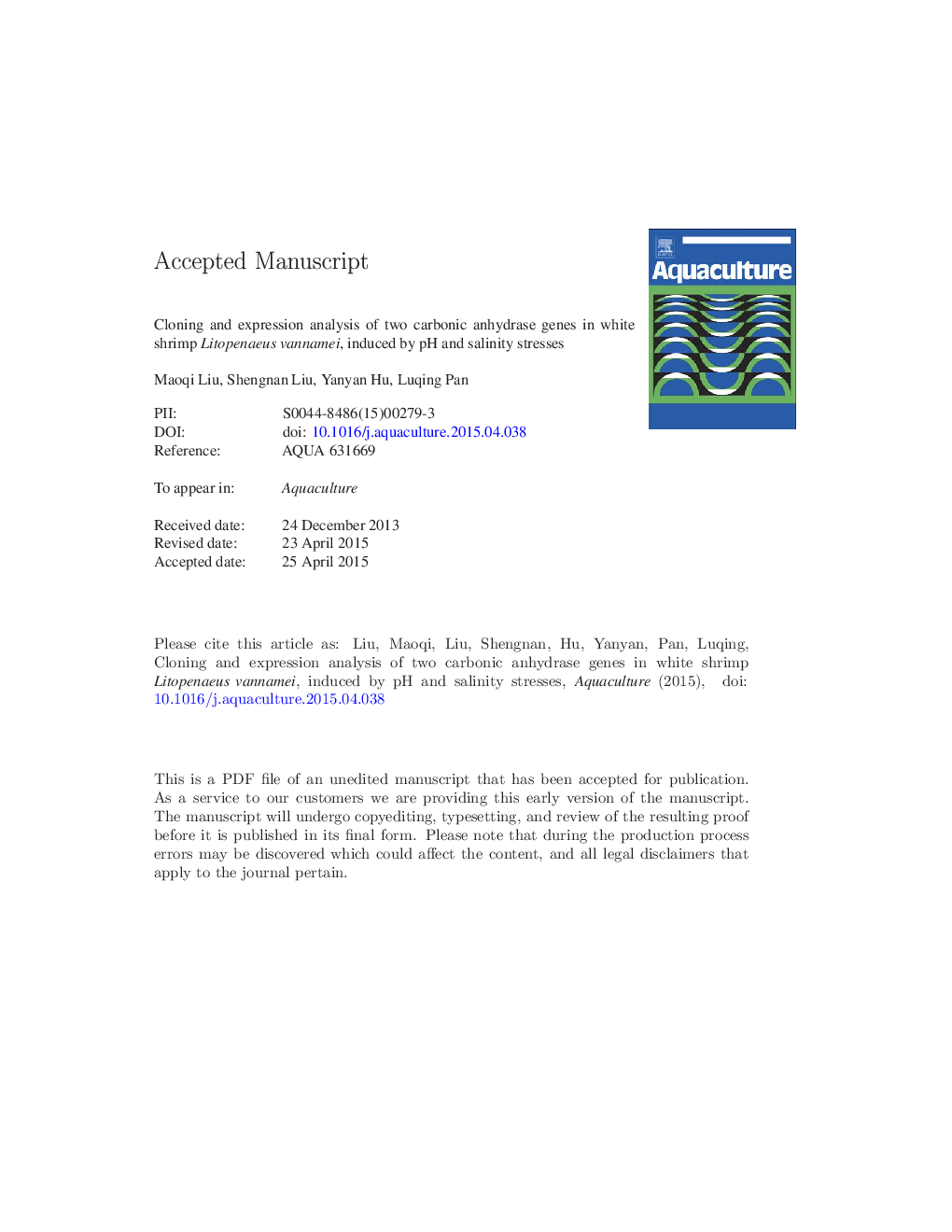| Article ID | Journal | Published Year | Pages | File Type |
|---|---|---|---|---|
| 8494508 | Aquaculture | 2015 | 33 Pages |
Abstract
Carbonic anhydrase catalyzes the interconversion of CO2 and HCO3â, and plays important role in keeping balance of body acid base and regulating the pH of body fluid. In this study, the full-length cDNAs encoding CAc (cytoplasmic carbonic anydrase) and CAg (glycosyl-phosphatidylinositol-linked carbonic anhydrase) from Litopenaeus Vannamei were isolated by RACE-PCR (GenBank accession no. HM991703.2 and JX975725). LvCAc is consituted by an ORF of 810Â bp encoding for a protein of 29.56Â kDa. The LvCAg is constituted by an ORF of 927Â bp encoding for a protein of 32.6Â kDa. The comparison of the deduced amino acid sequences with CAc and CAg from other crustaceans showed high conservation of the residues and domains essential to the function of these two enzymes. LvCAc mRNA expression was detected in gills, muscle, hepatopancreas, and hemocytes, and LvCAg mRNA expression was found in gills, muscle, and hepatopancreas. Using real-time quantitative PCR, we investigated two kinds of CA gene expression changes of L. vannamei challenged with different salinities and pH. Following salinity and pH treatment, LvCAc expression increased in 24-48Â h, reaching the highest level at 24Â h, and restored to intial level at 72Â h after the challenge of salinity change; while CAg expression presented peak change in 24-48Â h, reaching the highest level at 48Â h after the challenge of salinity decrease. Both of them were higher than that in the control group. The CAc and CAg expressions increased in 48Â h and 12Â h respectively after the challenge of pH increases or decreases, and there was no significant difference in the expression compared to the control group in other testing time.
Related Topics
Life Sciences
Agricultural and Biological Sciences
Aquatic Science
Authors
Maoqi Liu, Shengnan Liu, Yanyan Hu, Luqing Pan,
